Argentina used a variety of WWII items during the 1982 Falklands War, ranging in complexity from a Brooklyn class cruiser to M1 helmets. The most surprising, and least known, was an effort to resurrect the Mk13 anti-ship torpedo that nearly made it to use.

(US Navy Mk13 air-dropped unguided torpedo of WWII.)

(Argentine IA-58 Pucara attack plane with a Mk13 in 1982.)
The Mk13 torpedo was the lone air-dropped type the US Navy used against surface ships during WWII. By the end of the war, it was regarded as an excellent weapon, maybe the best of it’s type in the world.
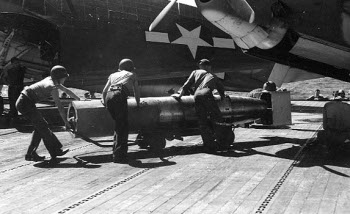
(Mk13 torpedo with the Mk1 kit fitted during WWII.)
The concept of warplanes dropping torpedoes is an American innovation dating back to 1912. Cpt. Bradley Fiske, a veteran of the Spanish-American War, designed equipment for dropping a torpedo from a biplane at 20′ altitude. Although Fiske’s system showed promise, Congress refused to fund further development until the First World War. The first ever successful use came on 12 August 1915, when a British seaplane sank an Ottoman ship with a torpedo.
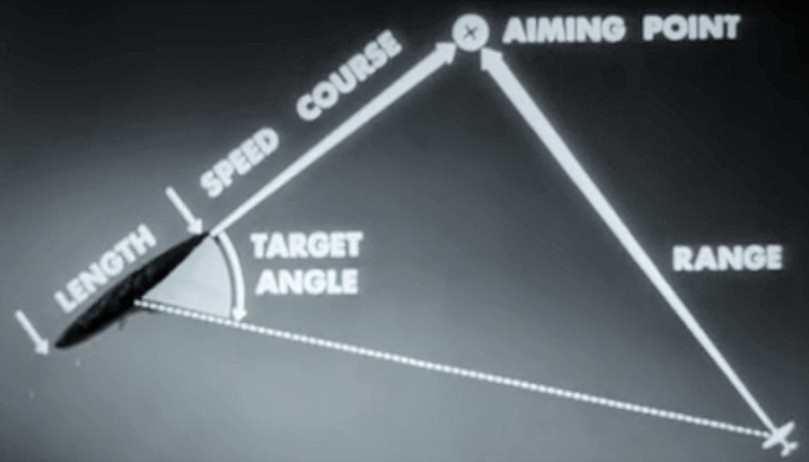
(The basic concept of “aiming” a straight-running, air-dropped torpedo didn’t change much from Cpt. Fiske’s time through the abandonment of these weapons in the mid-1950s.)
The concept gained prominence during the 1920s and 1930s. Tactics were simple and limited by the weapon itself: The plane descended to wavetop altitude, aligned itself perpendicular to the target ship’s course, slowed down as much as possible, and released the torpedo. If the straight-running torpedo was dropped too fast, or from too high, it would be destroyed upon impact. If the entry angle was too flat, the torpedo would bellyflop onto the sea and be damaged; and if the entry angle was too harsh, it would dip beyond it’s maximum depth (or hit the seafloor in shallow water).
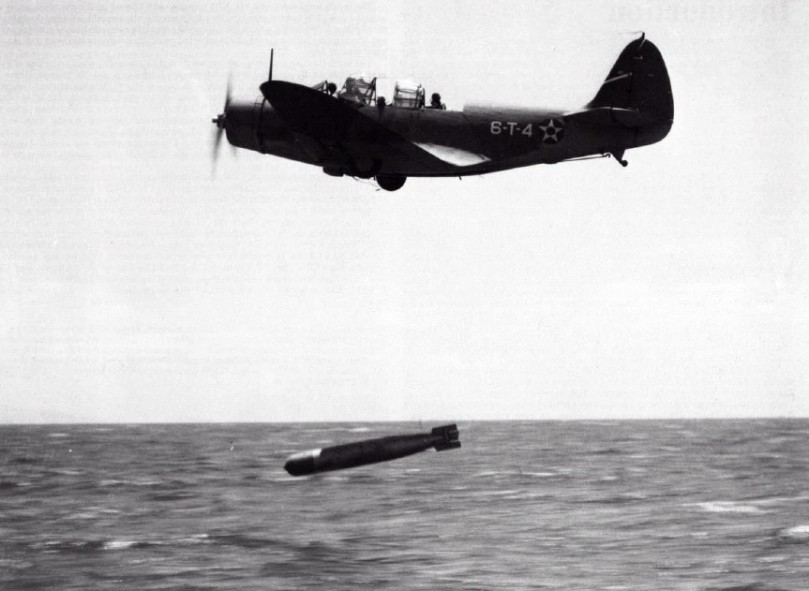
(A TBD Devastator of the US Navy drops a Mk13 the “traditional” way; flying very slow and very low in a predictable straight course, easily targeted by AA guns or enemy fighters.)
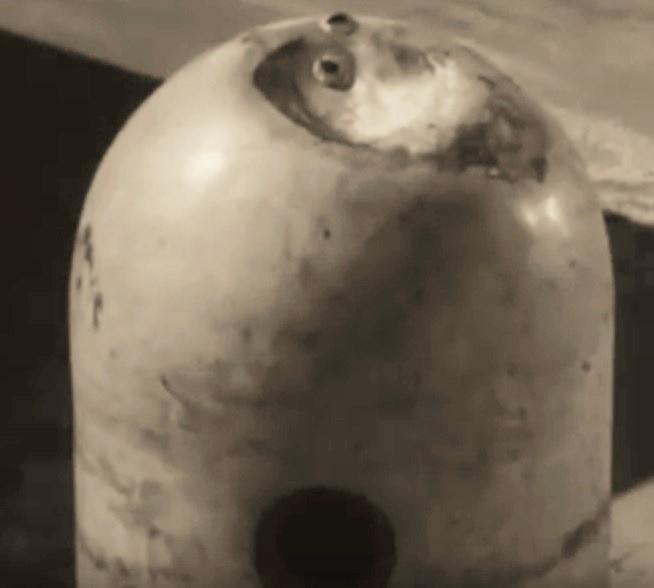
(This dent on an inert exercise Mk13 shows what happened when it was dropped too high or too fast before the kit was developed. A warshot Mk13 would have been destroyed.)
When these tactics originated, battleships were lumbering giants with minimal anti-aircraft guns; all optically-aimed, hand-loaded, and operated by handwheels. By WWII, the situation had changed. Large warships were agile, plastered with rapid-firing AA guns, and fitted with central fire control systems. More ominous was the rise of the aircraft carrier. The Imperial Japanese Navy in particular developed excellent anti-torpedo plane tactics. Carrier-based A6M “Zero” fighters would orbit over the task force at a medium altitude. If the incoming air attack was dive bombers, they could quickly ascend to intercept. Meanwhile if the attack was torpedo planes, the “Zero”s would wait until the attackers slowed for their attack run, then pounce from above, mowing them down like ducks in a row. During the Midway engagement in June 1942, torpedo squadron VT-8 off of USS Hornet (CV-8) lost all 15 of it’s TBD Devestators in less than two minutes, while torpedo squadron VT-6 off of USS Enterprise (CV-6) lost 10 of 14 and VT-3 off USS Yorktown (CV-5) lost 10 of 12.
The Mk13 torpedo: basic description
The Mk13 was 13’5″ long and 22″ in diameter, and ran at 33½ kts. Once in the water, it had a maximum run of 5,700 yards, with a minimum range of 400 yards. It weighed 1,525 lbs with a warhead compartment of a 400 lbs cast explosive charge and a 225 lbs fuze and burster assembly. The Mk13 was held to the plane by a wire harness attached to front and rear band racks. A small metal peg interfaced with a socket atop of the weapon to prevent it rocking forward/back and left/right while aboard the plane.
More than 17,000 Mk13 torpedoes were built before and during WWII.
Mk1 high/fast kit
When the US Navy entered WWII, it’s standard parameters for the Mk13 were a drop altitude of 50′ at no more than 110 kts. Ideally the Mk13 had to enter the water between a 26º-30° angle. Throughout the first part of WWII (especially after Midway), US Navy pilots urgently requested something be invented to allow them to drop Mk13 torpedoes at faster airspeeds and higher altitudes. To this end, the Mk1 “high/fast kit” was developed for the Mk13.
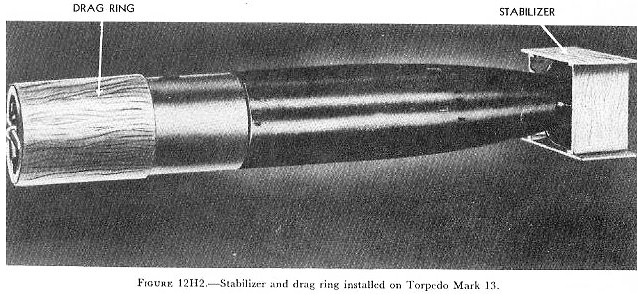
On the torpedo’s tail, a box-like structure of wood was slid over the circular ring, and affixed with soft wood pegs. While the torpedo was still mid-air, this structure acted like an airplane’s tail, eliminating pitch and yaw. Upon impact with the ocean, the pegs sheared in half and the box was forced off by the water.
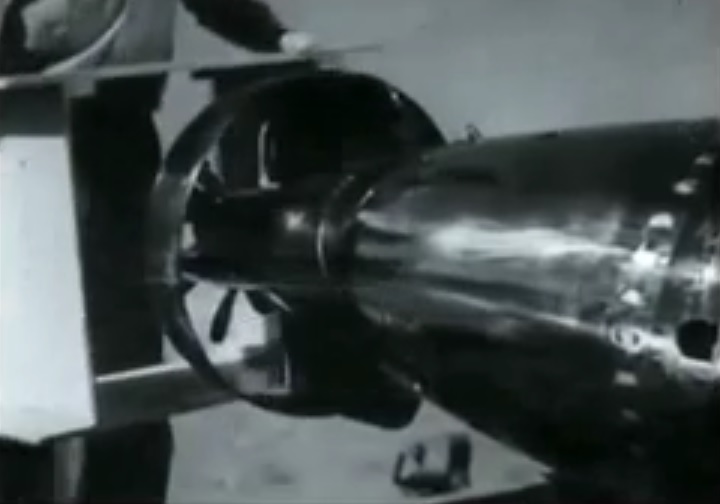
(The box being put over a Mk13 during WWII.)
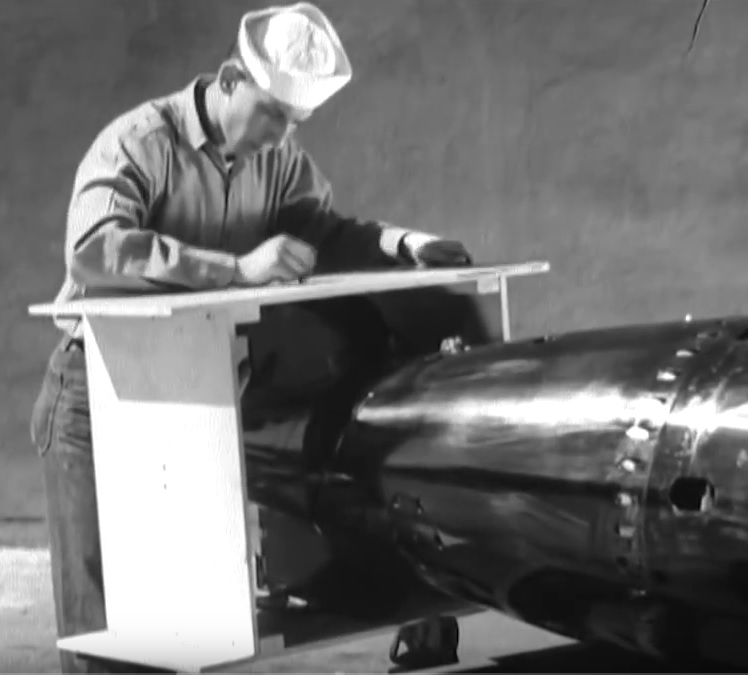
(Taken from a 1945 US Navy training video, this shows insertion of the soft wood shear pegs through the box into the Mk13’s metal shroud ring.)
On the torpedo’s nose, a wooden drag ring (commonly called “the pickle barrel”) was installed. It was a hollow cylinder of extremely thin wood set over wood ribs which rested against the torpedo’s body. It was held in place by a soft wood crosspiece. The pickle barrel had two functions.
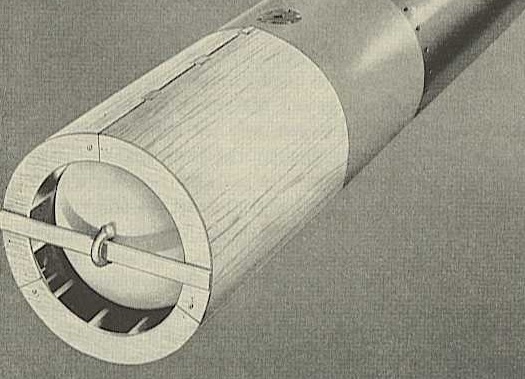
Mid-air, it acted like a fixed parachute, rapidly slowing the weapon down before it struck the ocean. At impact, the pickle barrel absorbed some of the jolt of hitting the water (up to 40%). The pickle barrel disintegrated upon hitting the water.
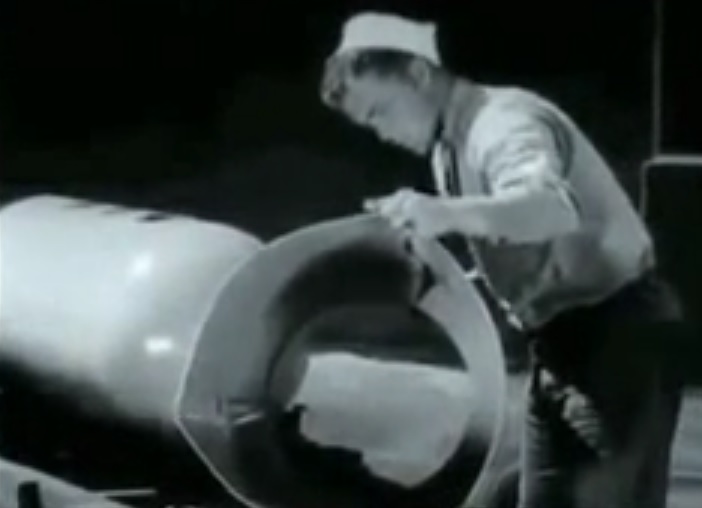
(The “pickle barrel” being installed onto a Mk13.)
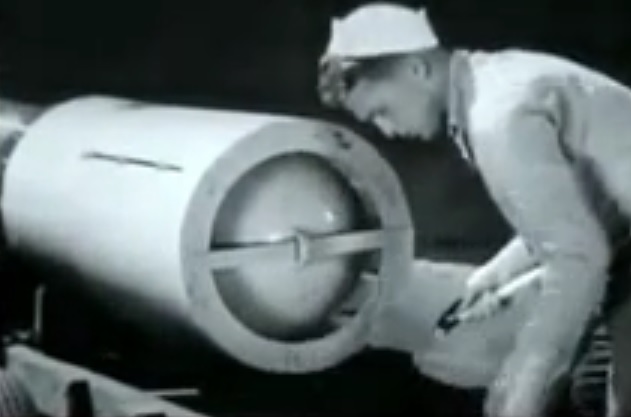
(The soft wood crosspiece which held the pickle barrel on was then tapped into place.)
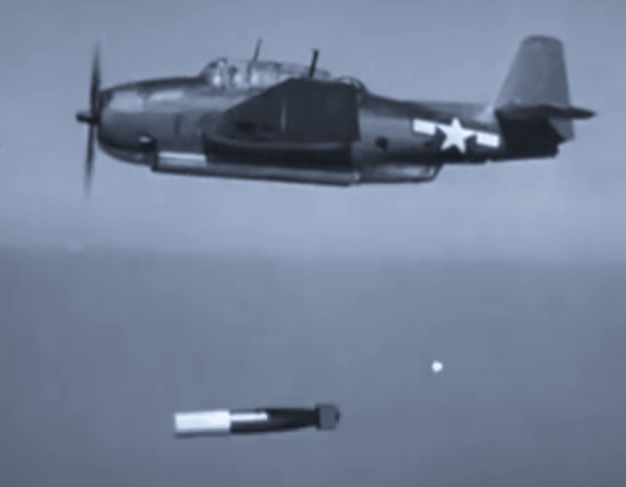
(The complete product being dropped from an Avenger during WWII.)
Other problems arose from expanding the Mk13’s envelope. The Mk13 was a “wet heater” torpedo, meaning it was powered by compressed air injected into a combustion chamber, where it mixed with fuel and ignited; being cooled by water which then evaporated into steam. The combined steam/ignited fuel mix then turned a turbine attached to the contra-rotating propellers. Obviously the Mk13 had to be switched on while still attached to the plane.
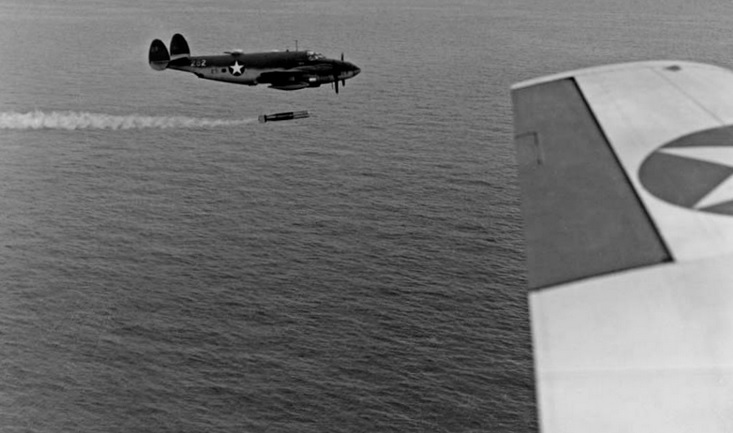
(A PV-1 Ventura dropping a Mk13 at low altitude during WWII; this was likely a pre-modification version as the exhaust of the uncooled engine is visible.)
For a “wet heater” which is cooled by water, the time after a wavetop drop (as in the 1930s) was the blink of an eye and irrelevant. But as altitudes increased, so did the uncooled mid-air time. By the end of WWII, this could be 11 or 12 seconds of uncooled time.
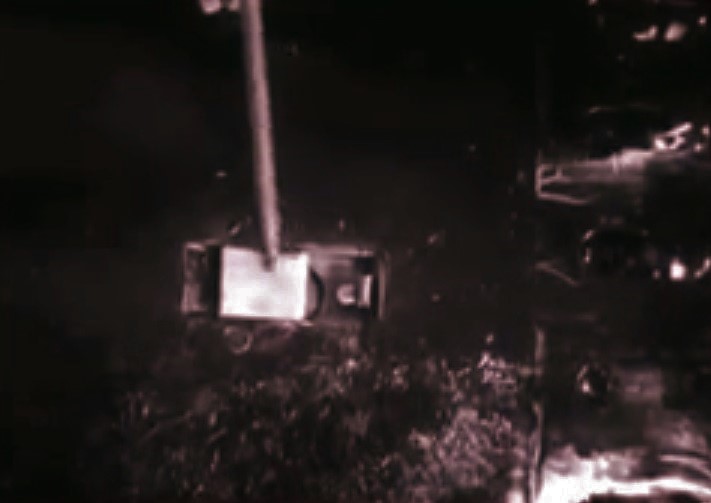
(The flapper valve which solved the problem.)
The US Navy developed a flapper valve which was held shut by wire in mid-air, then snapped open by entry into the seawater. The engine was this started at drop but did not fully engage until it was underwater.
Similarly, the Mk13’s fuze was armed by a paddlewheel. At slow airspeeds it held it’s position but at high airspeeds and high altitudes, the slipstream was enough to move it. This would unintentionally arm the warhead mid-air, which then blew up when it was jarred by entering the water. A streamlined cover and breakaway restraint solved the problem.
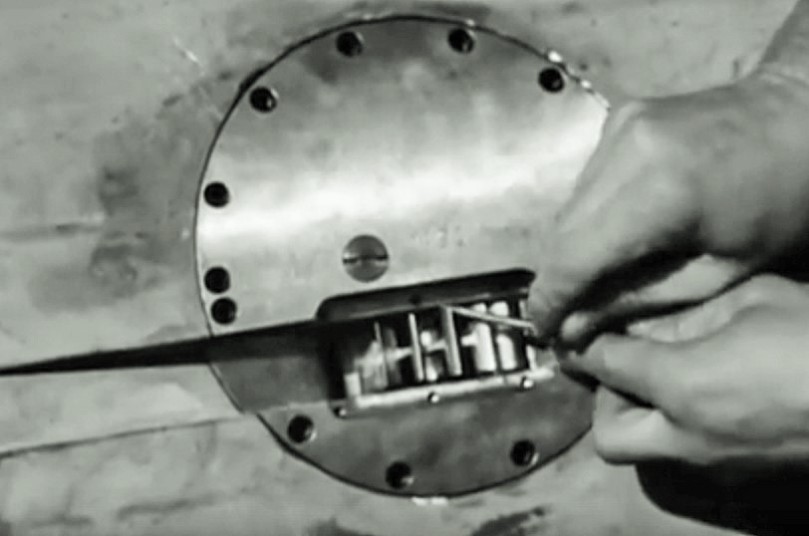
(The breakaway stopwire being threaded through the fuze’s paddlewheel.)
With all these improvements, the Mk13 torpedoes were dropped as high as 2,000′ and as fast as 350 kts; however more realistic parameters were 1,000′ and 260 kts, which was still a massive improvement.
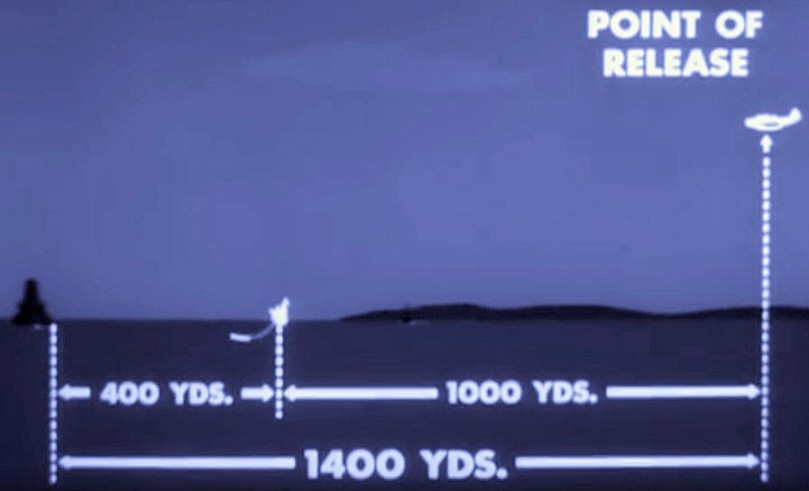
(An added bonus was the “toss” added to the Mk13; the mid-air distance downrange. This 1945 US Navy training aid illustrated both the proper 800′ targeting compensation, and how the Mk13 could conceivably be dropped while the Avenger was over dry land.)
In February 1944, US Navy planes successfully dropped kit-fitted Mk13s from 1,000′ altitude against Japanese ships near Truk. Argentina’s Mk13s had all of these improvements.
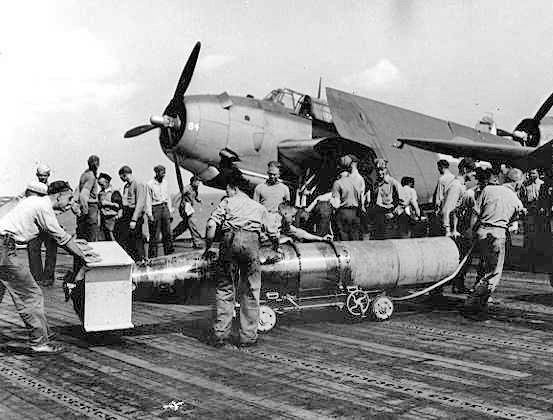
(Fully-modified Mk13 being loaded onto an Avenger aboard USS Wasp (CV-7) during WWII.)
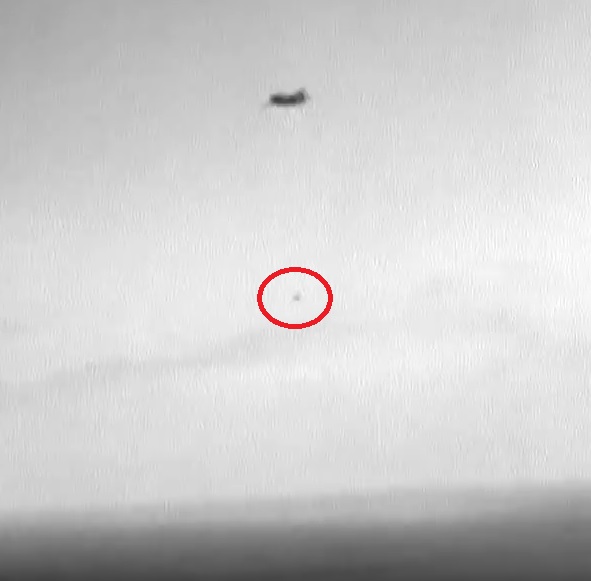
(Taken near the end of WWII, this photo shows an Avenger successfully dropping a kit-fitted Mk13 from 800′ at 260 kts airspeed.)
Sunset of anti-ship torpedoes
By the time of the Leyte Gulf battle in 1944, US Navy TBM/TBF Avenger squadrons (the TBD Devastator was already out of service) were restricted from torpedo attacks against strong combatants unless they were covered by fighters, or mixed with dive bombers (preferably, both).
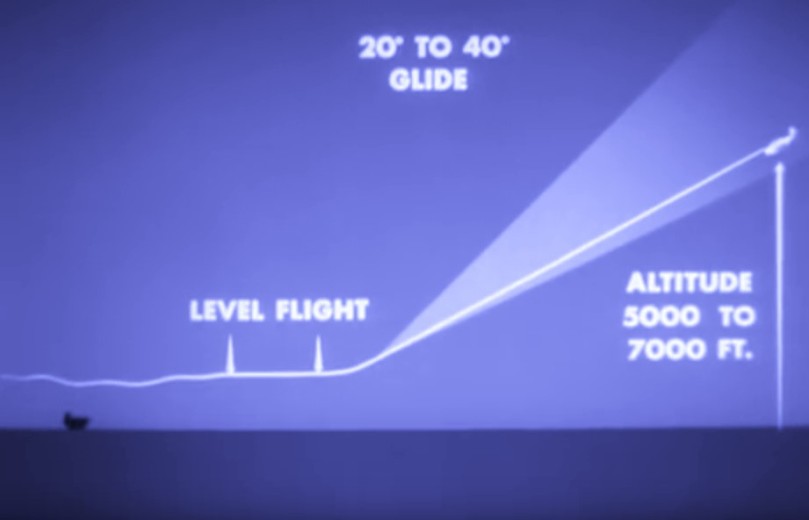
(Taken from a 1945 US Navy training aid, this shows torpedo attack procedure during the final year of WWII. Pilots were urged to start their attack with a moderate dive to make a more difficult AA target.)
Even at this time, the US Navy was aware that the tactic’s lifespan was finite. During the final year of WWII, Avengers often flew with either a 1-ton armor piercing bomb, or four 500 lbs bombs, in the torpedo bay instead of a Mk13. These were viewed as nearly as effective on a per-sortie basis, as was the air-to-surface rockets the Avenger could carry underwing.
The sinking of IJN Yamato in April 1945 was the last notable use of the Mk13 in it’s intended role. In some ways, the sinking marked both the end of the battleship era, and, an end to the torpedo planes which had plagued them throughout WWII from Taranto to Pearl Harbor.
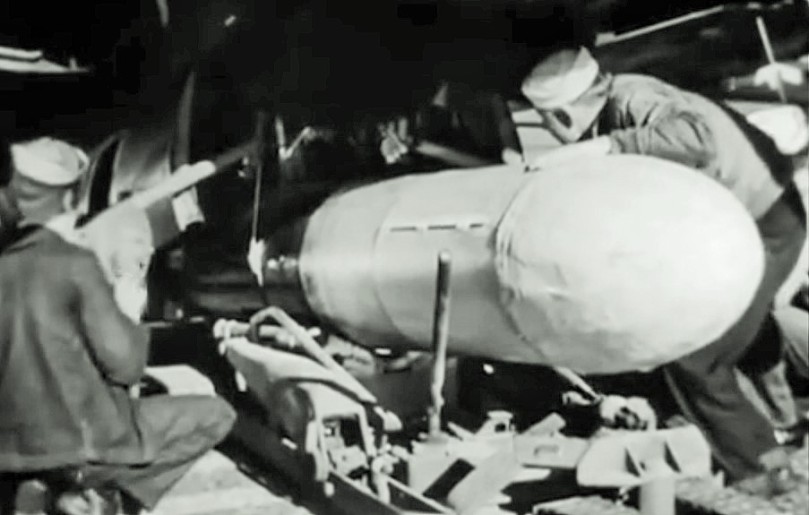
(Very late in WWII, an aerodynamic nose cap made of wood veneer was developed for the Mk13. Few were delivered before V-J Day. It’s not thought that Argentina received any postwar.)
The Mk25 torpedo, which began development in WWII, was supposed to have been the Mk13’s replacement. It was delayed when President Roosevelt vetoed the 1945 naval budget. Production started in 1946 but only 25 were made, as there were thousands of Mk13s leftover from WWII and the US Navy was abandoning the tactic anyways.
The final two US Navy warplanes designed for the Mk13 were the A-1 Skyraider and P-2 Neptune. Neither carried them often. The A-1 later gained fame as a “ground pounder” during the Vietnam War, while the P-2 was recast as the first Cold War submarine hunter-killer.
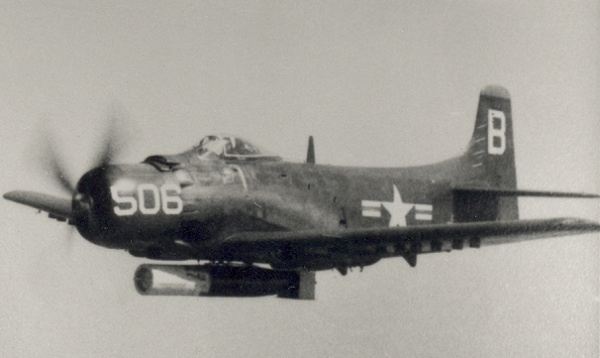
(A-1 Skyraider with Mk13 torpedo after WWII.)
The last combat use of the Mk13 by the US Navy was in May 1951 during the Korean War. The Mk13 was withdrawn from all frontline squadrons during 1953. The last American user overall was NAS China Lake, CA; which retired it’s Mk13 stockpile in 1954.
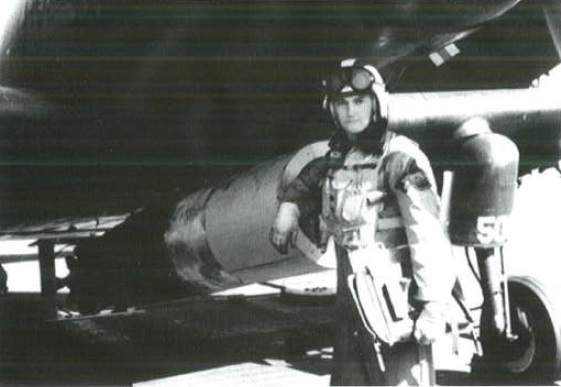
(Mk13 underneath an A-1 Skyraider aboard USS Princeton (CV-37). The pilot’s flight suit is of the Korean War era so this was probably in the 1950s. USS Princeton was the final frontline carrier with Mk13s aboard.)
Beginning in the late 1940s, Congress made the US Navy’s huge Mk13 inventory available to allied navies for purchase. There was little objection in the American ranks. The Mk13 was considered pre-WWII technology with few secrets left to hide, irrelevant to Cold War tactics, and the sales relieved the US Navy of the storage and eventual disposal costs. One of the recipient nations was Argentina.
Mk13s to Argentina
In 1946, Argentina used American aid to acquire 17 Canadian-operated PBY-5A Catalinas. During WWII, the Catalina had been used for many missions: search & rescue, anti-submarine patrols, staff transport, reconnaissance, and even attacks on lightly-defended surface ships. The PBY was certified for the Mk13 torpedo. During the Midway engagement of WWII, a US Navy Catalina torpedoed the Japanese oiler IJN Akebono Maru.
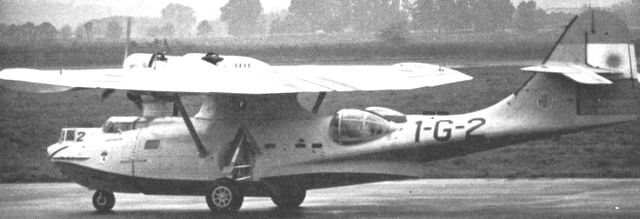
(Argentine PBY-5A Catalina in November 1958. The Argentines deleted machine guns off some of them but retained on all the ability to drop ordnance, including the Mk13 torpedo.)
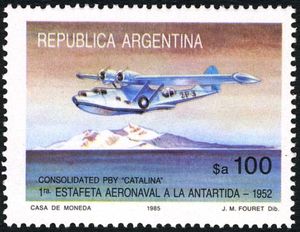
(Argentina also used it’s WWII-veteran Catalinas in Antarctica during the 1950s.)
Along with the Catalinas, Argentina imported some Mk13 torpedoes from the USA. On Argentina’s Catalinas, the drop speed was between 90 to 99 kts (the plane’s maximum speed was only 153 kts) and 50′ altitude, taking care to try and put the weapon into the water at a 20° angle.
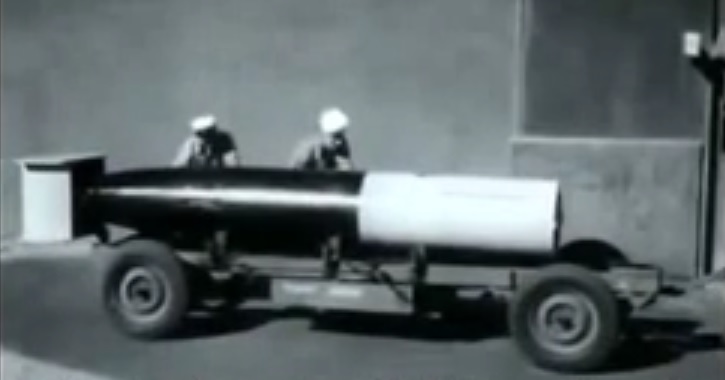
Other than some training drops, the Mk13s were never used by Argentina and were put into storage when the last Catalinas were retired in 1959. Like most of the rest of the world’s navies, Argentina had moved on away from WWII-style aerial torpedo attacks, and it’s surprising the Mk13s weren’t scrapped outright.
the Pucara: basic description
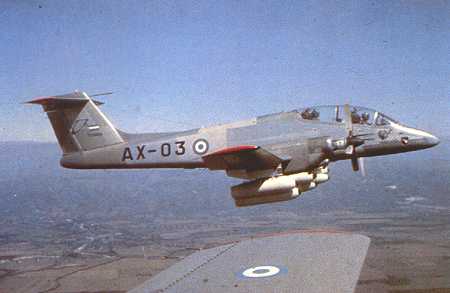
The IA-58 Pucara was designed and built by FMA in Argentina. It was originally intended as a counter-insurgency (COIN) plane. As the Argentines observed the USA’s air war in Vietnam, it was noted that thousands of dollars were being spent on each mission to send expensive supersonic jets to drop bombs on Vietcong guerillas trudging around the jungle with rusty Mosin-Nagants. In 1966, work started on a plane that would be cheap to build, cheap to operate, easy to pilot, easy to maintain, and effective against ground targets with minimal AA protection and no air opposition. It was never intended to use the Pucara in high-technology combat, nor to use it against warships.

(Argentine groundcrew rearming a Pucara on the occupied Falklands during the 1982 war. The WWII-vintage M1 steel pot helmet was standard Argentine headwear during the conflict.)
A concept demonstrator flew in 1969-1970. The prototype flew in 1973 and the first production plane in 1974. By 1976 the Pucara was in squadron service.

(A sight absolutely no British infantryman wanted to see in 1982; a Pucara coming around for a strafing run.)
The 2-seat Pucara is 46’9″ long with a 47’7″ wingspan. It is powered by two Astazou turboprops. The level-flight top speed is 270 kts however in a full power dive it can approach 390 kts. It is fairly maneuverable considering it’s size and mission. The Pucara is heavily armed, with two HS.804 20mm autocannons and four FN M2-30 7.62mm NATO machine guns. Each autocannon has 270 rounds while the machine guns have a combined total of 3,600 rounds. The Pucara can also carry 3,570 lbs of external weapons: bombs, rockets, gun pods, napalm, cluster bombs, or – for a brief period in 1982 – one torpedo.
As of 2017, the successful Pucara is still in service with several air forces.
the Falklands War: Argentine air operations
The origin of Argentina’s Mk13 project came about as a result of Argentina’s peculiar tactical situation in 1982. On the occupied Falkland Islands, Stanley Airport’s runway could barely operate the A-4 Skyhawk (a Vietnam War-era American jet) but no supersonic types, and the airport was in a vulnerable position. Most Skyhawk missions during the war originated on the Argentine mainland. The Skyhawk’s biggest advantage was that it could be refueled in flight, and that it could operate off the aircraft carrier ARA Veinticinco de Mayo.
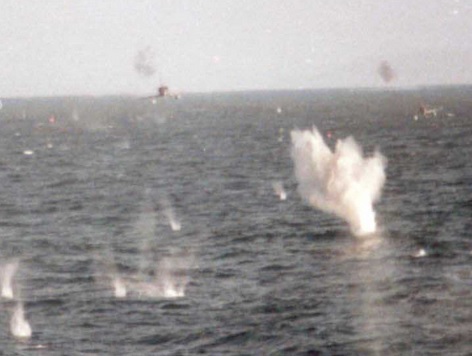
(A pair of A-4 Skyhawks make a wavetop bombing run on HMS Coventry.)
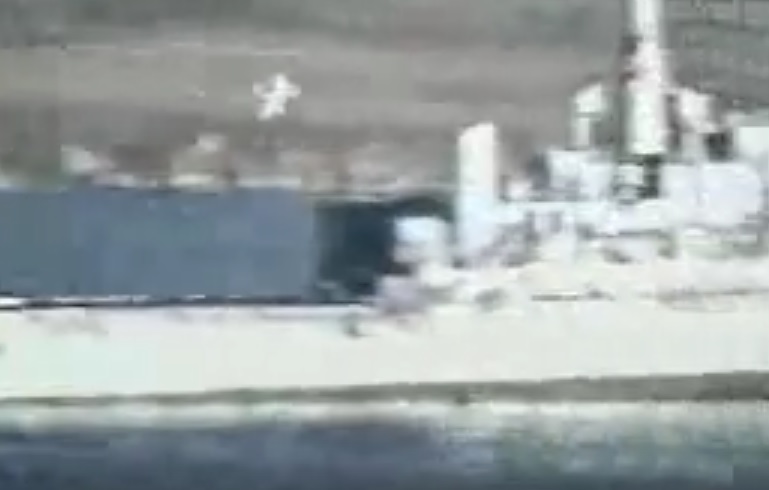
(Argentine A-4 pilots flew with tremendous skill and courage. Here a Skyhawk passes directly over HMS Fearless.)
The rest of Argentina’s jets were based solely on the mainland. The Super Etendards could fire AM.39 Exocets, which were worth their weight in gold to Argentina during the war, and thus were used for nothing else. The Israeli-made Daggers and French-made Mirage IIIs were supersonic, but, limited by range. Even with minimal bombload and maximum fuel, they had less than 9 minutes to find and attack a target before heading home.
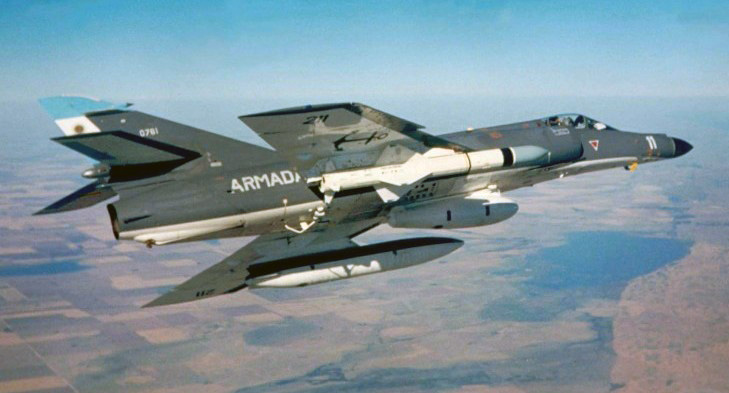
(A lethal combination of the 1982 war, an Argentine Super Etendard with AM.39 Exocet.)
This left the Pucaras. Obviously they were much slower than jets, but they had a huge advantage in that besides Stanley Airport, they could fly off two makeshift grass airstrips: one at Pebble Island on West Falkland’s north coast, the other at Goose Green on East Falkland. They were designed for simple and infrequent maintenance and as such, the mostly-draftee occupation force could upkeep them on the islands, probably indefinitely.
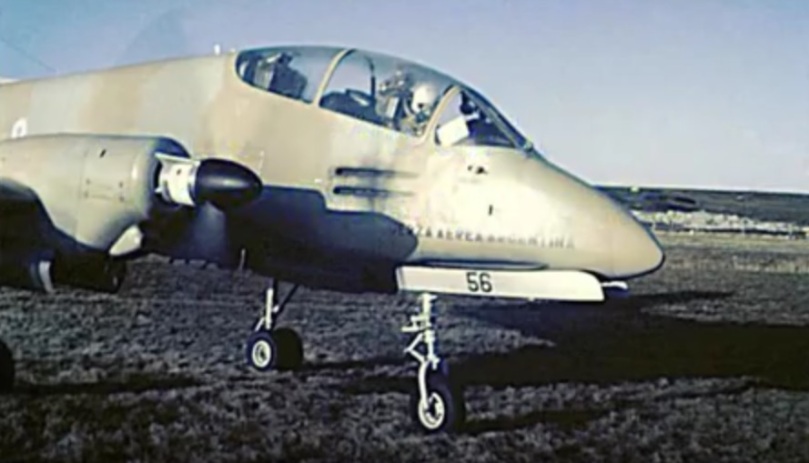
(Pucara flying off one of the grass airstrips on the islands during the war.)
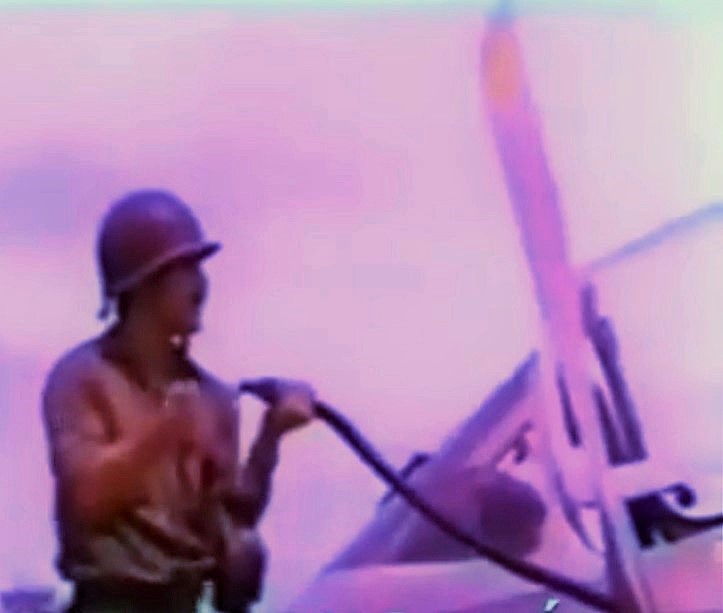
(A Pucara being refueled at one of the grass airstrips in 1982. The plane was designed to need minimal support equipment, operated by draftee ground crewmen.)
The Pucaras on the islands were ferried there at night, at high speed, and at wavetop altitudes, all to avoid British detection. During the occupation, some Pucara pilots had making low-altitude practice flights over Falkland Sound. So even though the Pucara was never intended for nautical use, it was quite obviously capable of such.
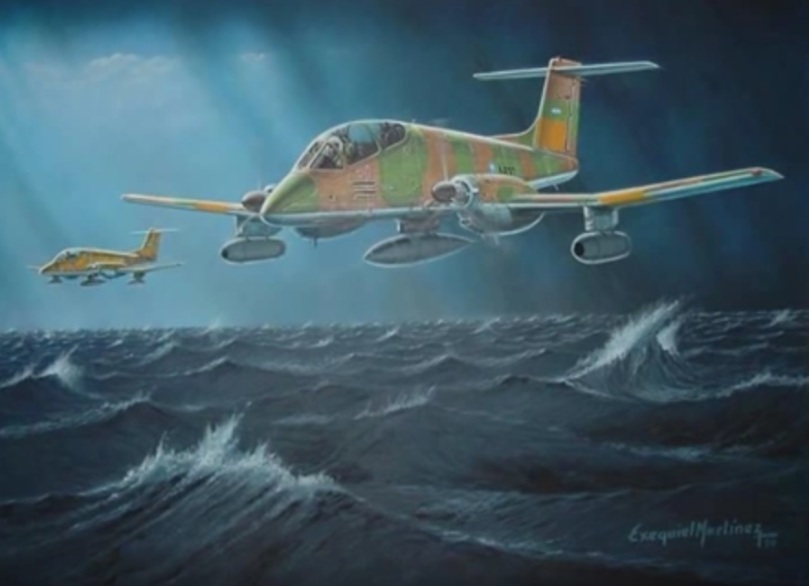
(A pair of Pucaras making the dangerous wavetop ferry flight from South America to the Falklands.) (artwork by Exequiel Martinez)
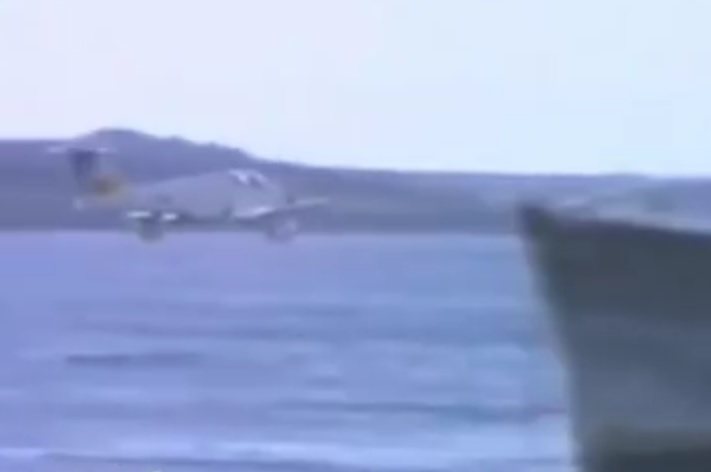
(A Pucara exercises over Stanley’s harbor during the occupation of the islands.)
The other issue facing Argentina in 1982 related to the ordnance the planes used, and their tactics for delivering it. Almost exclusively, Skyhawk and Dagger missions against British ships used free-fall bombs, mainly the Mk.XVII (a British 1,000 lbs bomb, bought in happier times), the old American M117 (a basic 750 lbs bomb), the American Mk82 (500 lbs) & Mk83 (1,000 lbs) weapons of the Vietnam War era, and the Spanish BR-250 (similar to the Mk82).
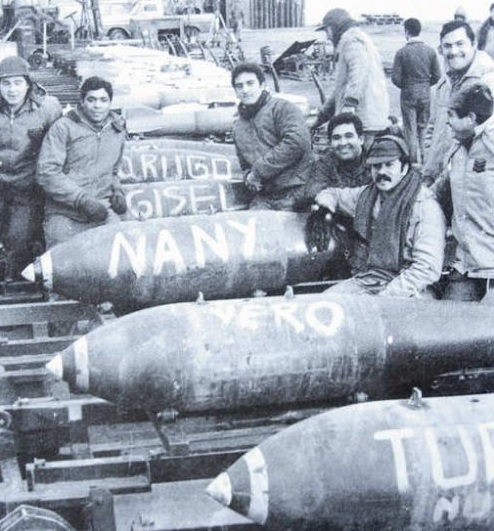
(Argentine groundcrew with British-made Mk.XVII bombs ready for use against their makers.)
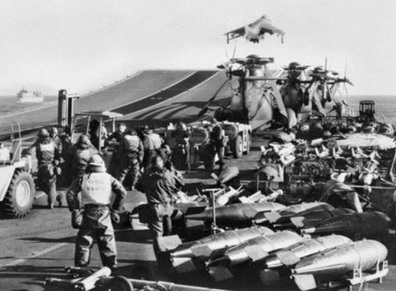
(Both sides used the Mk.XVII in 1982. Here some are seen aboard HMS Hermes as a Sea Harrier departs.)
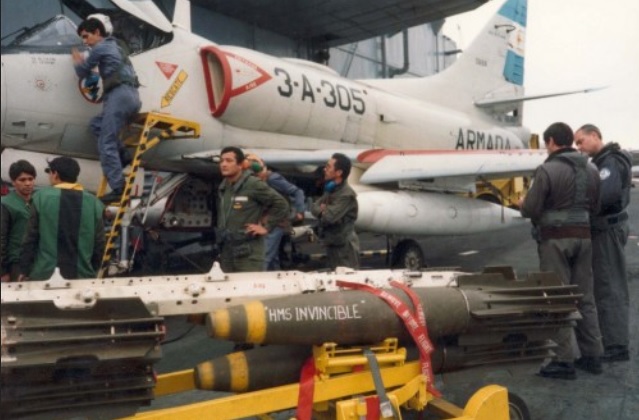
(American-made Mk82 bombs with the Snakeye retarder kit aboard ARA Veinticinco de Mayo, originally a WWII British carrier. One has it’s intended target marked. The planned carrier strike was cancelled due to range and weather.)
All these bombs had impact fuzes armed by a timed impeller in the nose. This required a certain number of airflow revolutions after the pylon’s safety wire snapped to arm the bomb; the idea being it would prevent detonation if it accidentally contacted the plane, and would allow the plane time to escape the blast’s shrapnel.
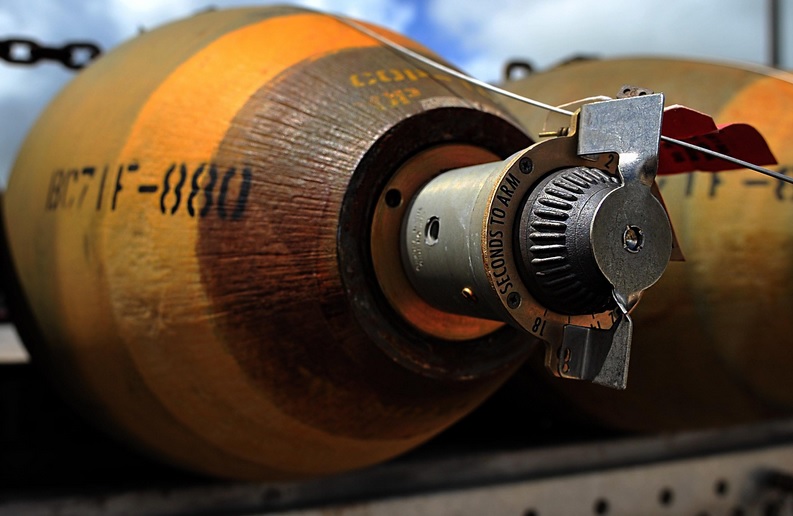
(The impeller fuze on an American-made M117 bomb. The wire snapped as the bomb left the pylon, allowing the impeller to move in the slipstream. In theory it could be set to 2 seconds, but the Argentines discovered that if it was set at minimum, the aging fuzes would usually fail completely.)
The problem the Argentines had in 1982, was that their jets were attacking the British fleet barely off the ocean’s surface at very high speed. At these very low altitudes, it took as much as 3 seconds between the safety wire snapping and the fuze arming which was, due to the high drop speed, sometimes longer than it took the bomb to hit the ship.
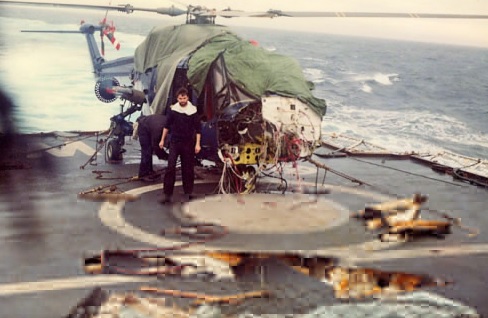
(A Mk.XVII bomb hit the hangar of HMS Broadsword, ricocheted off the Sea Lynx helicopter, and flew off the other side. It did not have sufficient time to arm, but as it flew off the ricochet, the fuze achieved sufficient time and the bomb exploded in the water. Less than one second mid-air decided this outcome vs the bomb exploding aboard.)
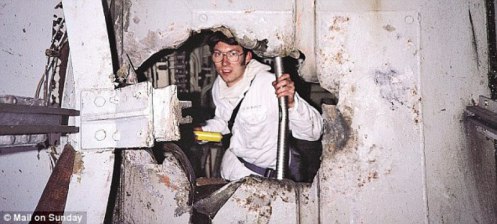
(An Expal BRP-250 bomb hit HMS Antrim but had insufficient time to arm mid-air.) (photo via Daily Mail newspaper)
The problem was especially acute on the Mk82s and Mk83s, which were aerodynamic and thus took even longer to decelerate in the air. In any other situation, these would have been the best of the types available. For the Mk.XVII and BR-250, a drogue kit was available however these were of limited supply and also reduced the accuracy. For the Mk82 and Mk83, Argentina had some Snakeye tail retarders which worked excellently. However the USA curtailed deliveries of Snakeyes even before the war, so each one used was irreplaceable.
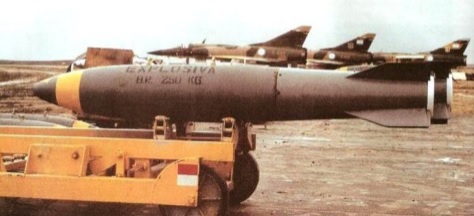
(Expal BR-250 bomb with drogue fitted, ready for use by the Dagger jets behind it.)
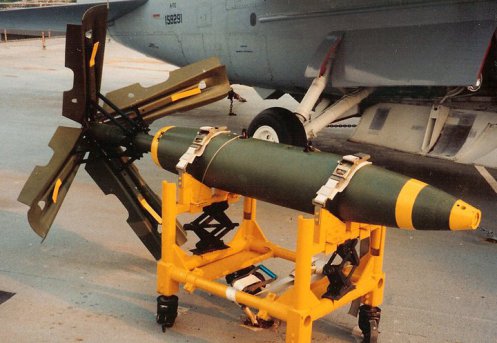
(The Snakeye retarder kit only fit on American-made bombs and the Argentine inventory was limited.)
During the war HMS Argonaut, HMS Glasgow, HMS Antrim, HMS Plymouth, and a landing ship were all hit by Argentine bombs which failed to explode due to lacking enough midair time to arm. HMS Antelope was hit by a dud which was then accidentally detonated by the EOD team.
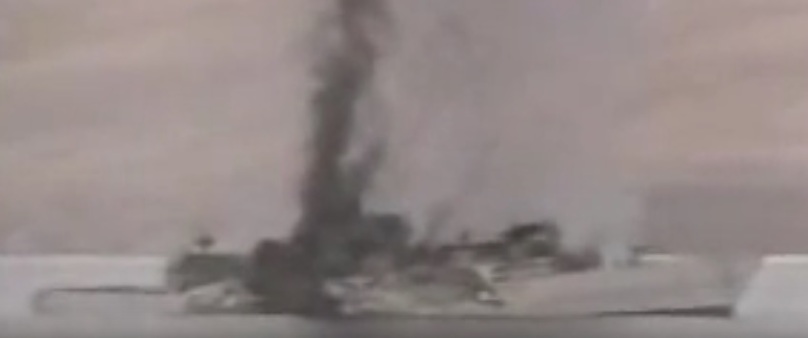
(HMS Antelope burns and sinks.)
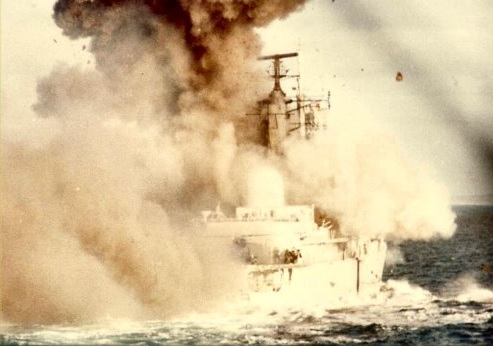
(Not all of the Argentine bomb attacks failed. HMS Coventry was sunk by three bombs dropped off A-4 Skyhawks.)
Other than the precious few Exocet missiles, there were limited options for the Argentines to attack Royal Navy ships. On 21 May 1982, HMS Argonaut was lightly damaged by a MB-339 subsonic jet trainer the Argentines had moved to the islands, using French-made unguided rockets. This showed that the idea of using light aircraft forward-deployed to the occupied Falklands was viable, but, also that small rockets would not inflict sufficient damage.
What was desired was a weapon that could be used by light, subsonic planes already on the islands, delivering as much or more damage as bombs, but without the arming time dilemma.
the Mk13 project 1982
In early May 1982, during a joint Argentine navy / air force planning session at Puerto Belgrano, it was mentioned that the navy still had long-warehoused Mk13 torpedoes. These WWII-manufactured weapons had been drained of all fluids and stored carefully in 1960, and might be restored to running order now 22 years later.
This seemed to possibly be the answer the Argentines were looking for. Mk13s could be airlifted to the islands aboard C-130 Hercules transports, then mounted on Pucaras already there. Once so fitted, they could repeatedly take off and attack the nearby Royal Navy flotilla.

(Pucara at one of the grass airstrips on the Falklands.)
A Mk13 hit in 1982 would have been devastating. During WWII, battleships and cruisers were built with waterline armor, anti-torpedo bulges, secondary bulkheads, and the such as it was fully expected they would face “light torpedoes” like the Mk13. However by the 1980s, frigates and destroyers were basically streamlined shells only meant as a vehicle for the high-tech radars, sonars, computers, and missiles aboard. They were designed for high-tech, long-range combat, and it was never envisioned that they would once again have to deal with brute unguided torpedoes dropped from propeller planes.
It was immediately ordered to retrieve Mk13s from storage and start a crash project to adapt the WWII weapon to the modern Pucara. Although the actual Mk13s were quickly found, the team was initially unable to locate the WWII guidebooks for the Mk13. Almost certainly these had been boxed up when the Catalinas were retired and then forgotten about. Later, these were either found or obtained elsewhere by Argentine intelligence.
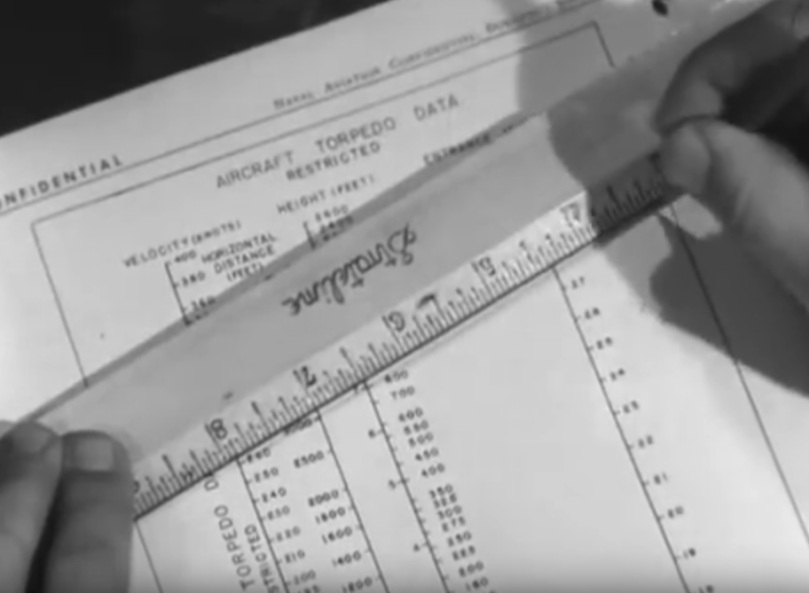
(During WWII, US Navy mathematicians developed a targeting equation involving the plane’s airspeed, distance to the ship, the plane’s altitude, and the correct entry angle of the Mk13 torpedo. If the crew knew two of these factors, the equation solved the rest. By 1982 this was long since declassified as nobody thought the Mk13 would ever see use again.)
The particular Pucara chosen wore the number “AX-04”. This Pucara had been withheld from squadron service for use as a stores qualifier (testing weapons releases), and had a small belly camera fitted that would allow the team to observe the Mk13’s behavior before and immediately after drop.
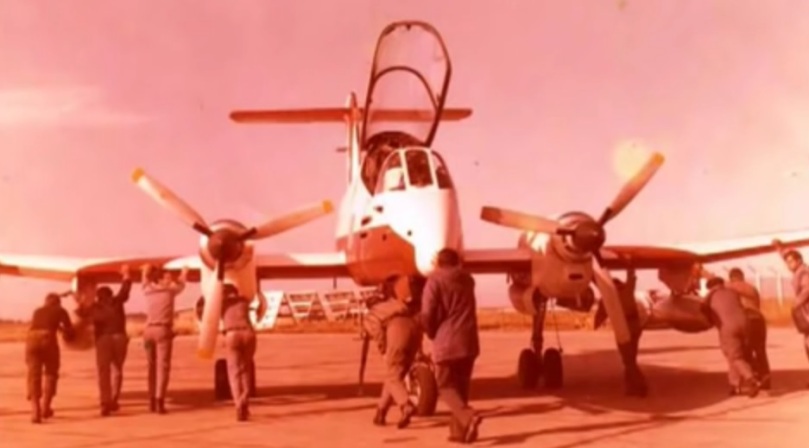
(AX-04 during the 1982 torpedo test project.)
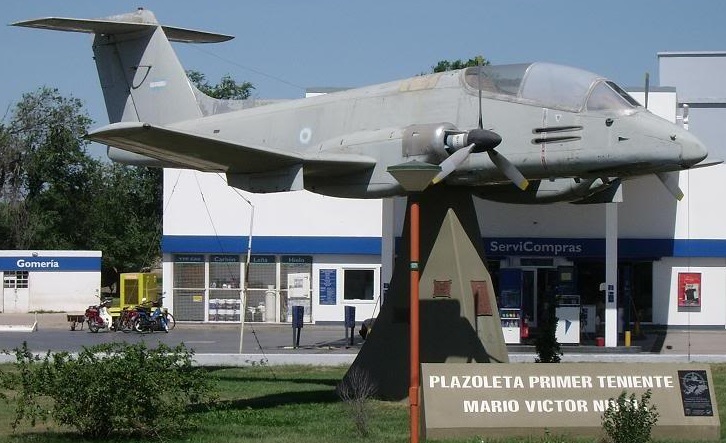
(Pucara number AX-04 was later repainted in normal colors after it passed the airframe fatigue lifespan and mounted as a monument.)
To actually drop the weapon, the Argentines had two concerns. The first was the angle the weapon entered the water, which had to be kept as flat as possible. Unlike the open Pacific during WWII, Falkland Sound has an average water depth of only 86′ and even shallower in areas, meaning any major “dip” after entry into the water would result in the Mk13 hitting the seafloor. The second concern was the same as US Navy pilots had expressed 40 years previous, in that release had to be at the maximum possible airspeed to limit exposure to AA fire.
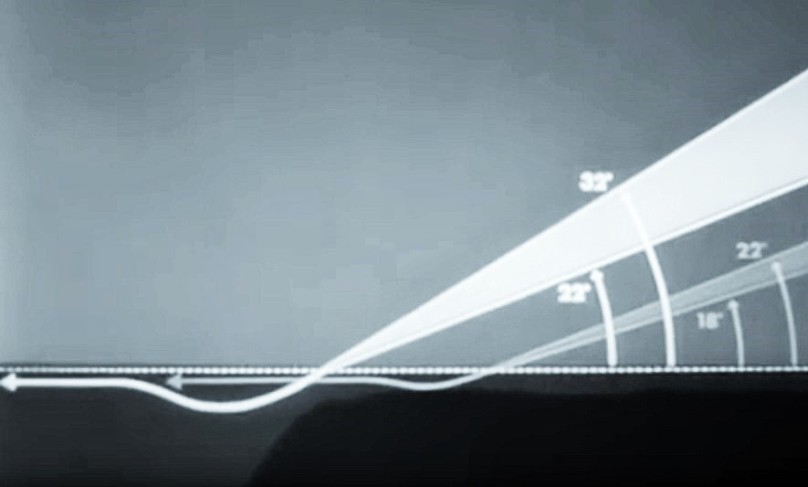
(US Navy guidelines for the Mk13’s proper entry angles for shallow water and normal use. If possible, the deep (22°-32°) was preferred as it allowed the plane to dive and make a harder AA target. The gentler angles resulted in a smaller and shorter dip in shallow water. Like the equation above, the US Navy had long since declassified this and it was available to the Argentines in 1982.)
The first step in the project was testing to see if a Pucara could even carry a Mk13. This was by no means as simple as it sounds. The Pucara has modern NATO lug patterns on it’s three weapons pylons, which are quite different then the 1930s-vintage system which the Mk13 was designed for.
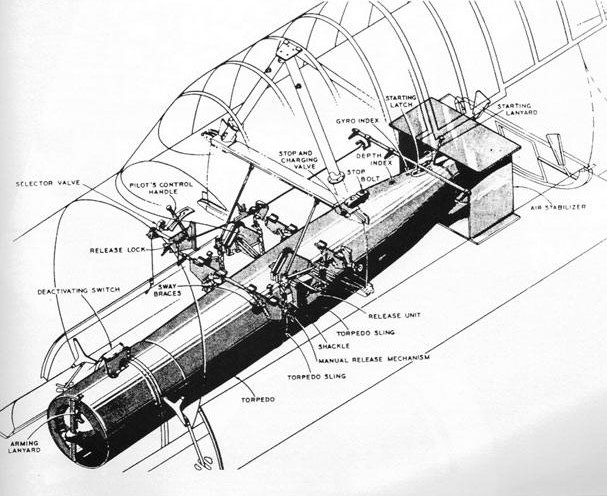
(Drawing from a 1940s US Navy handbook illustrating the correct carriage of a Mk13 during WWII.)
Due to the Mk13’s weight, only the centreline pylon on the Pucara would be suitable. Even here, the Mk13 was slightly over the pylon’s limit. Given that Argentina was at war, and that the Pucara was a tough plane, it was decided to try it anyways. A suitable shackle arrangement was devised, as was a way for the arming lanyard to be activated by the modern pylon.
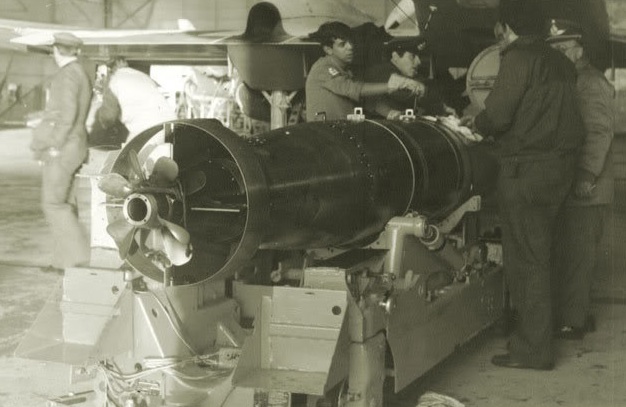
(Mk13 being wheeled underneath AX-04’s centreline pylon as a carriage method was quickly thought out. This photo shows the contra-rotating propellers on the Mk13.)
On 22 May 1982, the first Mk13 test drop was attempted. The weapon was put into the water at a 20° angle, from 328′ altitude at 300 kts. The WWII torpedo released successfully and appeared to be falling normally, but was destroyed upon impact with the ocean.
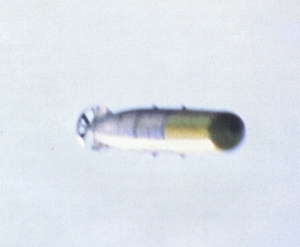
(Taken by the ventral camera of AX-04, this shows a Mk13 (maybe one of the ones on 22 May) after leaving the Pucara’s pylon.)
Later that afternoon, a second attempt was made. It had identical parameters (a few knots were shaved off the drop speed), however, it also resulted in the torpedo being ripped apart as it hit the water.
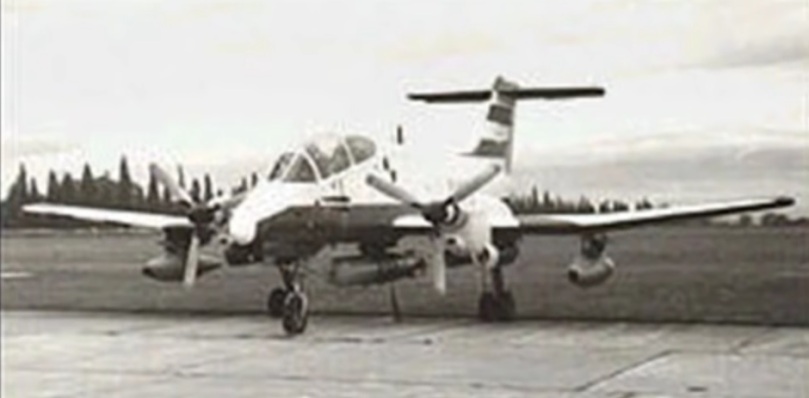
(AX-04 with a Mk13 less the high/fast kit. This photo might also have been taken on 22 May 1982.)
Perhaps belatedly, feelers were put out to veteran’s clubs, looking for ex-sailors who had long ago worked with the Mk13. Several former petty officers came forward and immediately identified the problem, that the high/fast drop accessories were not being used. By memory alone, the ex-sailors described both the “pickle barrel” and tail box relatively accurately, enough to keep the project moving. In the meantime, (either at home or abroad; the US Navy had long since declassified them), schematics of the high/fast kit were found.
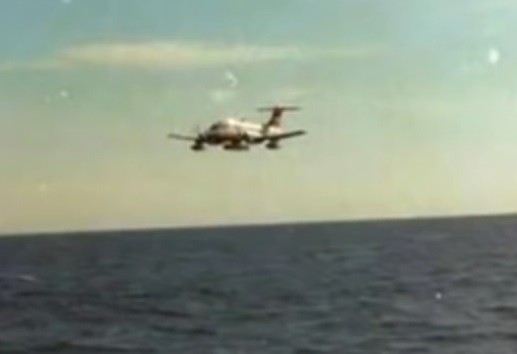
(Pucara with Mk13 over the Atlantic Ocean in 1982.)
On 23 May 1982, a third attempt was made. This time the test pilot strove to avoid having the Mk13 bellyflop, and put it in the water at a significantly harsher 45° angle. The airspeed was 252 kts and the drop was done at 657′ altitude. This test, yet again, was a failure. This time the Argentines were unable to determine if the Mk13 had broken apart due to the speed and altitude of impact, or, if the steeper angle had sent it below it’s depth limit.
Overnight between 23 – 24 May 1982, a crude facsimile of the high/fast kit was made. The morning of the 24th, it was successfully fit onto a Mk13, and immediately flight carriage tests were done. Based on these, it was determined that the Mk13 should be released at about 50′ altitude and 195 kts airspeed. As far as the entry angle, it was recommended that the Pucara pilot just keep the plane level and allow the high/fast kit to do all the work for him.
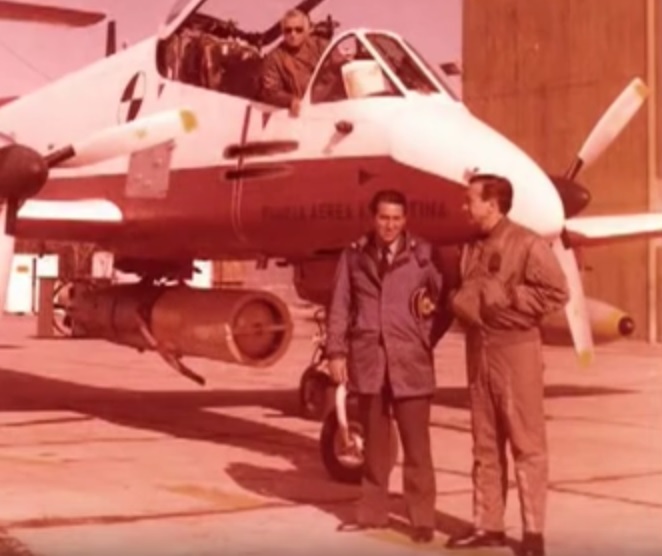
(The Mk13 with the Mk1 kit fitted. AX-04 was not intended for combat, and was marked with photo calibration checkerboards.)
Over the next few days, seven Mk13s were dropped by the Pucara AX-04 with the high/fast kit. These tests were only to ensure that the weapon would not be destroyed, and in all seven instances, the kits worked and the WWII torpedoes appeared to survive entry and start running normally. The next step was to run a full start-to-finish mock attack. The “target” chosen was a cliff north of Puerto Santa Cruz. The water approaching it matched the topography of Falkland Sound, and it would allow a definite observation of whether everything worked.
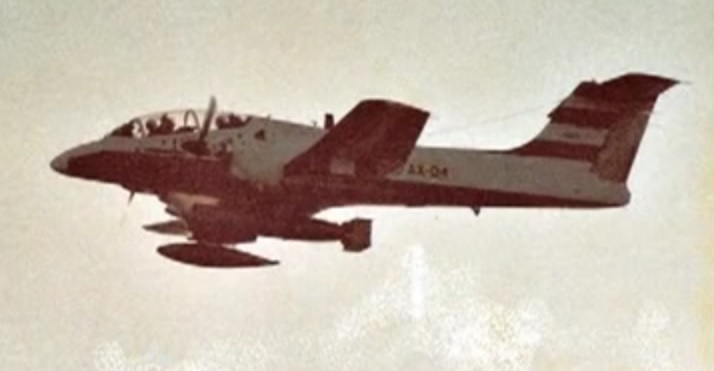
(AX-04 with a kit-fitted Mk13 onboard.)
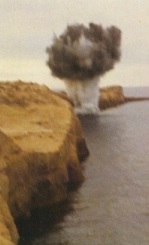
(Mk13 impacting the target cliff.)
At the same time, a second Pucara was brought into the project. This was a normal, unmodified squadron plane and would serve to prove that the Pucara/Mk13 mating was a repeatable effort.
On 10 June 1982, a Mk13 with the high/fast kit was successfully dropped and completed it’s attack run. However, now that the project was at full fruition and looked to be about ready for actual war use, maybe the Argentine AF representatives started having second thoughts, as they stated that the 195 kts airspeed would be unsurvivable against Royal Navy AA defenses. They said that the minimum drop speed should be 251 kts, which was well within the US Navy’s successful range during WWII while using the kit. The Argentine navy members agreed but wanted to run a last test at the higher speed. To do this, a deeper test site was needed.
Meanwhile events in the Falklands were approaching their endgame. Many Pucaras on the islands had already been destroyed; by 7 June there were less than 10 still flyable. Their marines already ashore, the British began scouting actions around the capital city Stanley on 11 June 1982. On 12 June, the destroyer HMS Glamorgan was hit by an Exocet; this would be the final Argentine success of the war. Overnight between 12-13 June, the British began the final push to liberate Stanley.
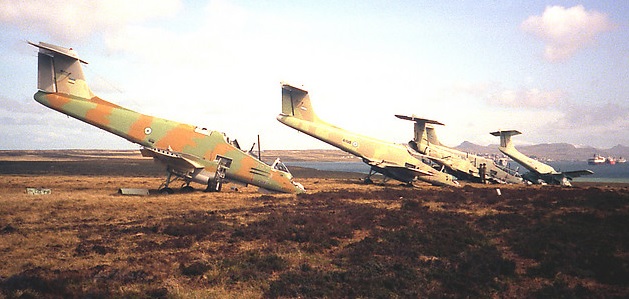
(Destroyed Pucaras on the Falkland Islands in 1982.) (photo by Ian Howat)
As this was happening, the Mk13 team had relocated to the deeper test site. On the morning of 14 June 1982, the team was preparing the Pucara for the test when an order was received to cease the effort. That morning, the Argentine garrison on the islands had surrendered.
the Mk12 project
As an aside, the team also had another WWII weapon in mind for the Pucara. During the Cold War, Argentina operated several GUPPY-retrofitted WWII submarines from the United States. Along with them came some WWII-vintage Mk12 submarine-laid mines. The Mk12 was 7’9″ long and 1’9″ in diameter. However, as it had a magnetic fuze, it was made largely of aluminum and only weighed 1,445 lbs.
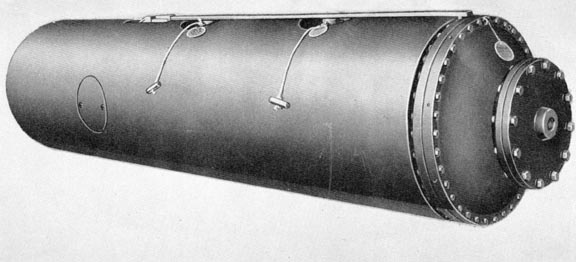
The Argentines proposed to use Pucaras to drop Mk12s in Falkland Sound, which separates the main islands of East and West Falkland. Specifically, a line of Mk12s would be laid across San Carlos Strait, a chokepoint which forms the northern end of Falkland Sound. This would force British warships to take a detour all the way around East Falkland and then back up the Sound to reach the center of the islands.
Laying a mine would presumably be much simpler than making a WWII-style torpedo attack. With the Mk12, there was obviously no need to aim it; all that would be needed was to plop it into the ocean.
The WWII Mk12 was not sophisticated by 1980s standards and Royal Navy technology was up to the task of neutralizing them. However it would be time-consuming to find the mines, and would certainly drag out the British operation. Part of Argentina’s overall strategy was to lengthen the war so the British public might tire of it. If a few British ships were sunk, all the better.
As far as the Pucara, the Mk12 mine project was secondary in importance to the Mk13 torpedo. During May 1982, some preliminary work was done, however the Argentines were unable to design a drop harness compatible with the Pucara’s pylons.
postscript and “what might have been”
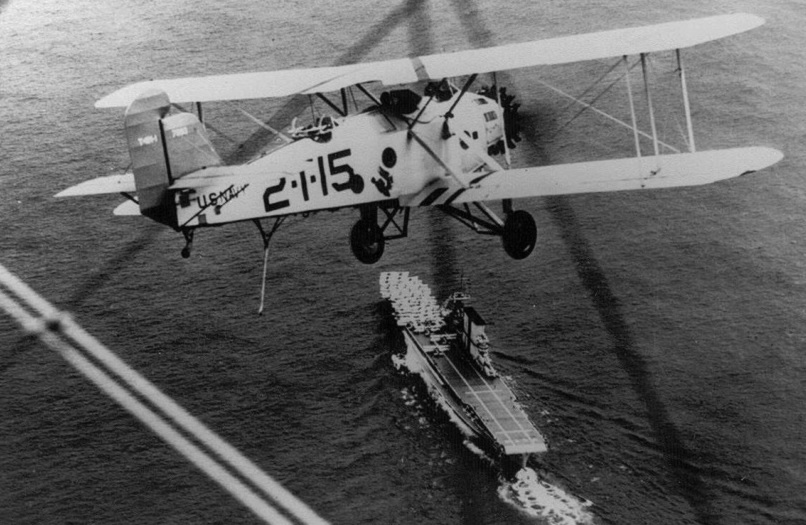
(In 1936, the Martin T4M became the first warplane certified on the Mk13. Forty-six years later in 1982, the IA-58 Pucara became the last.)
Despite the fact that the Mk13 never entered combat in 1982, the fact that it was even attempted is amazing. In the decades after WWII, there were many instances of wartime weapons which continued in use, but far fewer instances where both a basically extinct weapon and it’s entire tactical concept were resurrected.
Had Argentina thought of this idea before the invasion, the weapons might have been ready to go when the British task force arrived. As it turned out, the effort simply ran out of time.
The project is certainly an example of what can be accomplished in a national crisis when red tape is cast aside. Some of the steps, in particular the pylon mounting and separation tests, would have normally taken weeks of review, certifications, and official instructions. Instead, some tests were started after breakfast and finished by lunch.
It’s tough to say how this idea would have played out, had Mk13s made it to the Pucaras on the Falklands. The Royal Navy of the 1980s was oriented towards fighting a high-intensity, high-technology conflict against the USSR in the north Atlantic and the Baltic, and was not fully ready to travel to the edge of Antarctica to fight a medium-technology foe in restricted coastal waters. Early on, British captains struggled with using SAMs intended for long-range use against supersonic threats, against subsonic jets at wavetop altitude, masked by the islands radar clutter. On the other hand, the Royal Navy constantly adapted throughout the short 1982 war. It’s possible that a gaggle of a dozen Pucaras coming in low and fast from different directions could have wreaked great destruction on the British fleet; it’s just as possible that they would have been slaughtered before getting any Mk13s into the water.
The Mk13 was never again considered for use by any navy. After the junta collapsed following the defeat, the new Argentine government trimmed the navy’s budget and the remaining Mk13s were scrapped or sent to museums.
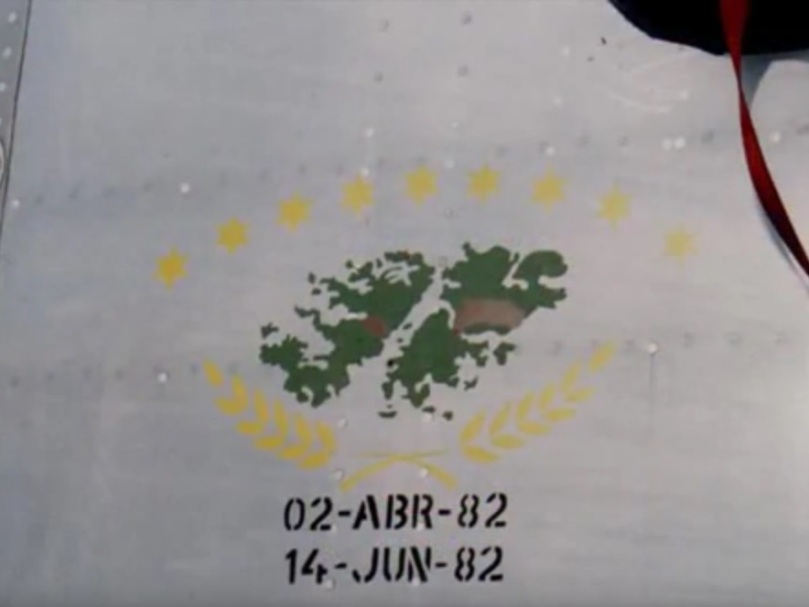
(Malvinas campaign markings on a Pucara.)

Thorough and informative, as always.
LikeLike
Reblogged this on Brittius.
LikeLike
Very informative article as usual. Is there any chance you will write about the use of other torpedo models in the postwar era? I mean, I know that the British Mk VIII was used to torpedo the General Belgrano and was used by the Norwegians for their shore torpedo batteries (at least at Oscarsborg if not at Kvarven as well) and that German torpedoes were used by at least Spain and Norway after the war and possibly others and that the American Mk 14 was a popular export item aboard submarines. But I was wondering if there is anything more specific out there. Also, is there any way of finding out how many torpedoes of a particular model (say, the Mk 14 and Mk 16) were used to sink practice targets after the war?
As an aside, is it not reasonable to say that the Japanese Type 91 was the better aerial torpedo of the war? It was after all faster and more reliable throughout the war (you did not mention how the Mk 13s up until mid-1943 at least ran erratically and/or ran cold and/or did not detonate at all when hitting ships). The superior range of the Mk 13 was difficult to put to use against moving ships at sea. Finally, the greatly increased engagement envelope afforded by the Mk 1 kit was more the merit of the shrouds than of the torpedo itself and a similar idea was used by the Japanese at least at Pearl Harbor, showing that the Type 91 was about as adaptable.
Also, how many Mk 13s did the Argentinians obtain?
LikeLike
Excellent, as always. Thanks very much.
LikeLiked by 1 person
The Argentines went in low cuz they were trained by Israeli Air Force pilots. And in the IAF, you go in LOW.
LikeLiked by 1 person
No es así. Eso lo descubrimos con la aviación naval simulando ataques sobre una clase 42. Los pilotos nunca alcanzaban a atacar y eran derribados. Hasta que uno por hacer una broma a los marinos del buque, descubrió que el radar no lo detectaba. Así comenzaron a probar hasta que dieron con los ángulos del lóbulo radar de la CL42. Israel no tuvo nada que ver
LikeLike
[…] this did not stop the Argentines from trying to fit U.S. surplus Mk 13 anti-ship torpedoes to FMA IA-58 Pucara prop COIN aircraft in the Falklands in […]
LikeLiked by 1 person
Very interesting reading.
LikeLiked by 1 person